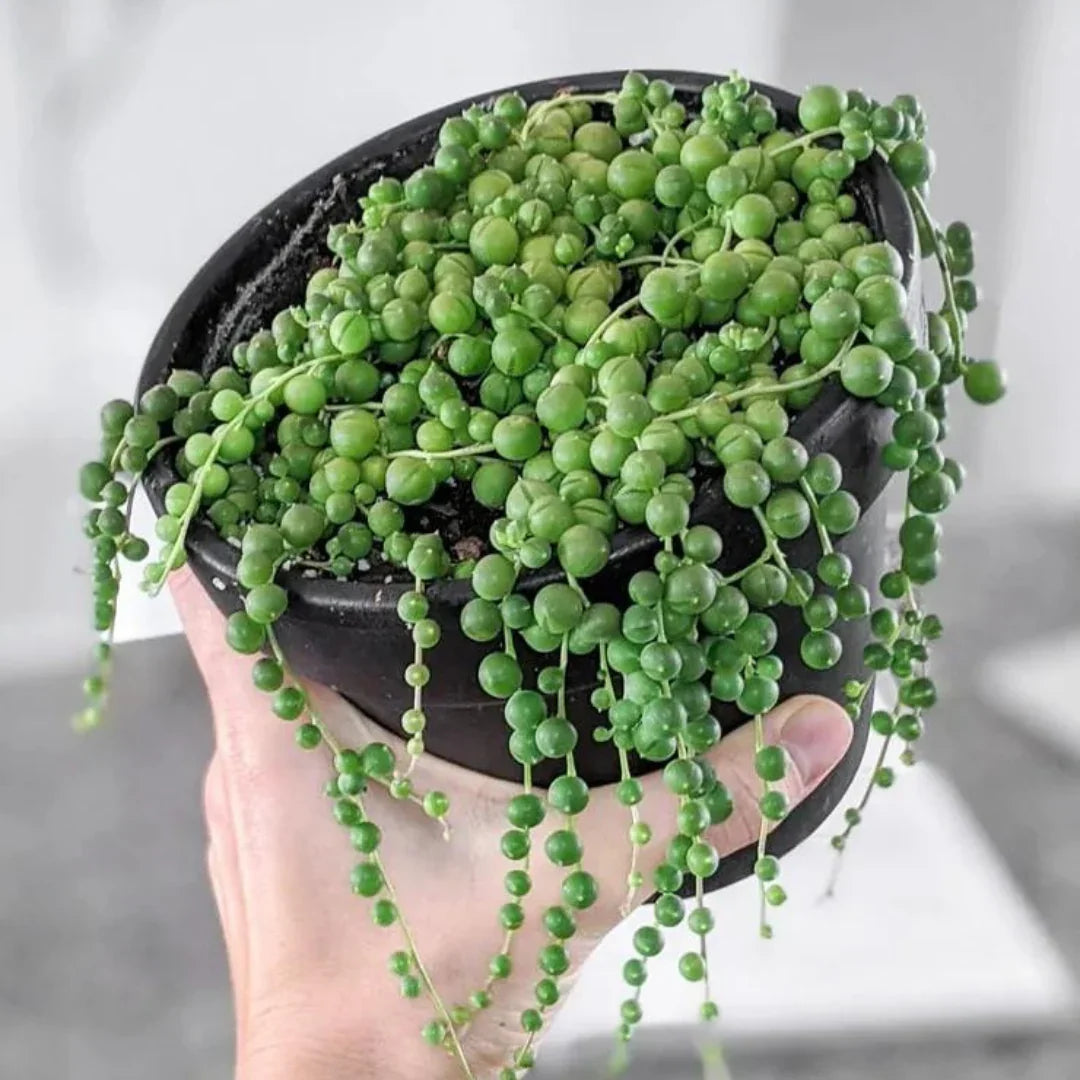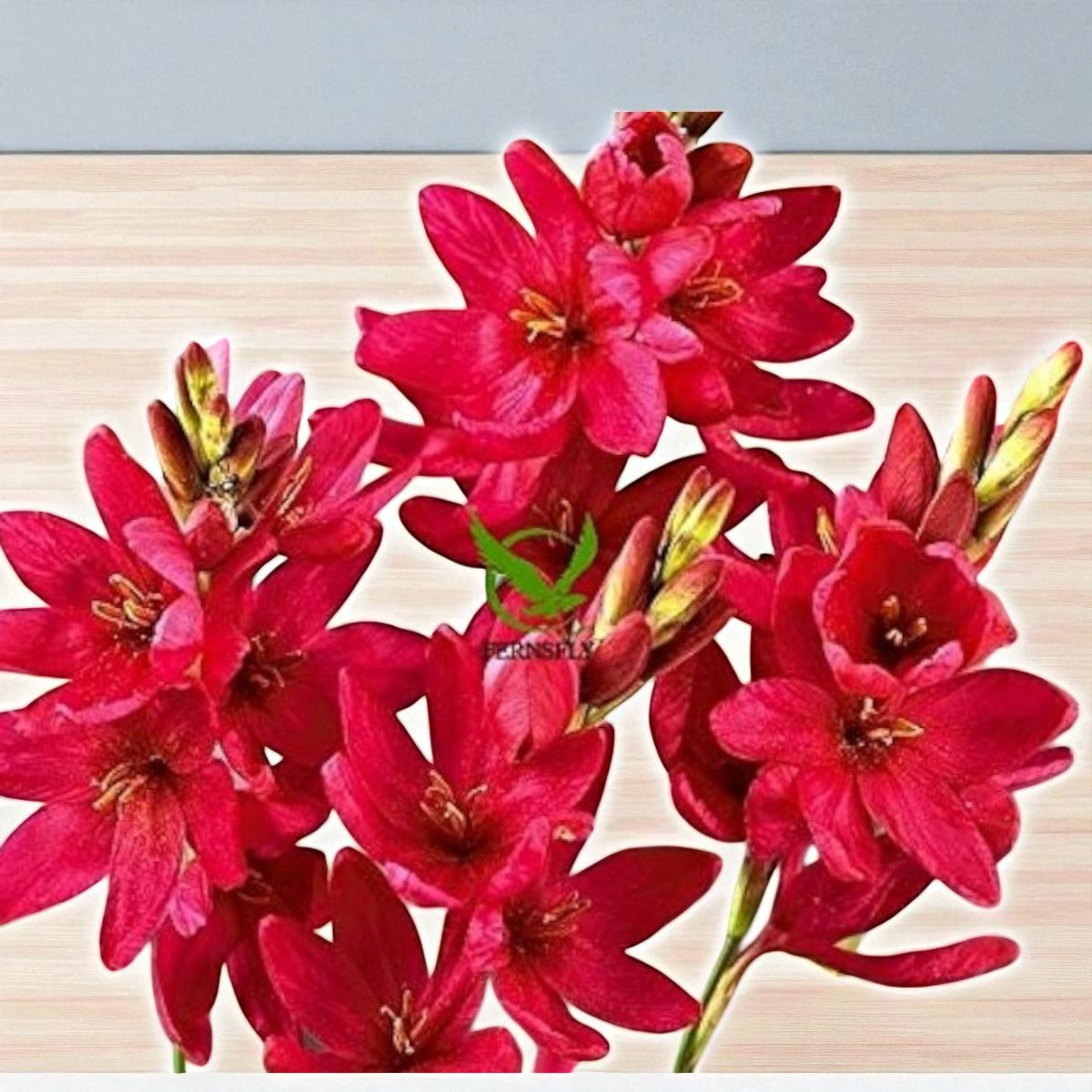
How to Grow String of Pearls Plant
How to Grow String of Pearls Plant ?
Although commonly cultivated year-round as a hanging plant, string of pearls plants are terrestrial in their natural habitat (deserts of East Africa), and form a ground cover . In addition to its peculiar shell-like leaves , the string of pearls plant produces white flowers in spring , which have a pleasant scent reminiscent of cinnamon (though this rarely occurs with flowers).
- Botanical name: Senecio rowleyanus ( also known as Curio rowleyanus)
- Common Name: string of pearls, string of pearls, string of peas , garland vine
- Plant Type: Succulent
- Mature Size: 1-2 feet tall
- Sun Exposure: Full sun , partial shade
- Soil Type: Sandy , well drained
- Bloom Time: Spring to Acidic Soil pH: Neutral
- Flower color: white
- Hardiness Zones: 9-12 (USDA)
- Origin: Africa
- Toxicity: Toxic to humans , dogs and cats
String of Pearls Plant Care :
The String of pearls plant is not particular about its conditions. Given enough light and fertilizer , it will grow fairly quickly in one season. A plant will live for about five years when properly cared for , but if you propagate new plants from stem cuttings , you can effectively keep it alive indefinitely.
To enable this plant to shine , a string of pearls is grown in a hanging basket with multiple stems . Its stems can also be twisted together , and you can even grow it in a dish , allowing it to form a terrestrial mat , the way it does in the wild. String of pearls has no major pest or disease problems , and doesn't require much care. However , it needs a lot of light throughout the year.
Roshni /String of Pearls light requirements
The string of pearls plant thrives on a combination of direct and indirect sunlight, between six and eight hours in total. They do best in direct sunlight during the morning , then move to a location that gets diffused , indirect light or partial shade during the entire afternoon.
Soil /Best cactus soil mix
Any regular succulent soil is fine for you for a string of pearls plant , but sandy soil is best. A good choice for this plant is a cactus potting mix – alternatively , you can use a 3:1 mix of potting soil and sharp sand. These plants are susceptible to root rot , so it is important to make sure their soil is well drained. Place them in a container that boasts ample drainage holes at its base -- even one made of terra cotta or clay can help wick away excess moisture from the soil.
Water /String of Pearls watering

Keep the plant's soil lightly moist during the growing season in spring and summer , then reduce watering during the winter months. If you notice that the succulent rounded leaves are flattening out , this is a good sign that the plant needs more water. Be careful not to overwater your string of pearls plant , but wet , social roots cannot escape.
Temperature and Humidity /String of Pearls Temperature and Humidity
The string of pearls plant thrives in warm temperatures above 70 degrees Fahrenheit through spring . It grows best with cool winter temperatures, ranging from 50 to 60 degrees Fahrenheit. The plant also likes low humidity , so avoid placing it in any already humid areas of your home , such as the kitchen or bathroom.
Fertilize string of pearls :
Feed the string of pearls plant organically during its growing season with a balanced liquid or water-soluble fertilizer, diluted to about half strength. During its dormant period of winter , you will need to feed the plant every six weeks.
Is String of Pearls Plant Poisonous ? (Is String of Pearls Plant Toxic?)
The leaf of the string of pearls plant is slightly toxic, and should never be consumed , so make sure it is not easily accessible to children and pets. While not extremely harmful , it can cause stomach problems like vomiting or diarrhea , and its cough can also irritate the skin. If you or your pet experiences any of the following symptoms , contact the appropriate medical resources immediately.
Symptoms of Poisoning in Humans:
- Vomiting
- Diarrhea
- skin irritation
- rash
Symptoms of Poisoning in Animals
- Vomiting
- Diarrhea
- skin irritation
- burning in the mouth
- rash
- fallen
- lethargy
- facial rub
Varieties of Curio Species :
The String of pearls plant, which is a member of the daisy family , but no other plant is very fond of it , and is commonly sold as " string of pearls " rather than its botanical name. There are some other , equally notable suicides in the same family , including:
- 'Curio radicans': Not as trailing as string of pearls ,this species has banana-shaped leaves. It is commonly known as banana string or string of fish hook.
- 'Curio herreanus': Commonlycalled string of watermelon or string of beads ,this trailing plant has small purple melon-shaped leaves.
- 'Curio citriformus:' This species has erect,teardrop leaves and small white flowers,which bloom between late summer and winter.
How to Propagating String of Pearls Plant ? (String of Pearls Propagation)
The String of pearls plant propagates fairly easily , and doing so is integral to the plant's continued presence in your home. To propagate , take stem cuttings that are several inches in length , and allow them to take over for a few days before repotting. Fill a small pot with succulent or cactus mix and repot the cuttings in soil. Let the new plants settle for a few days , then give them a good watering—they should take root quickly.
Repotting String of Pearls Plant:
It is a good idea to repot the String of pearls plant every year in early spring . These plants can only be pruned back a few times as they eventually start to die back , so after a few years, plant new cuttings instead of trying to preserve and replant an old plant. It is better to spread.


